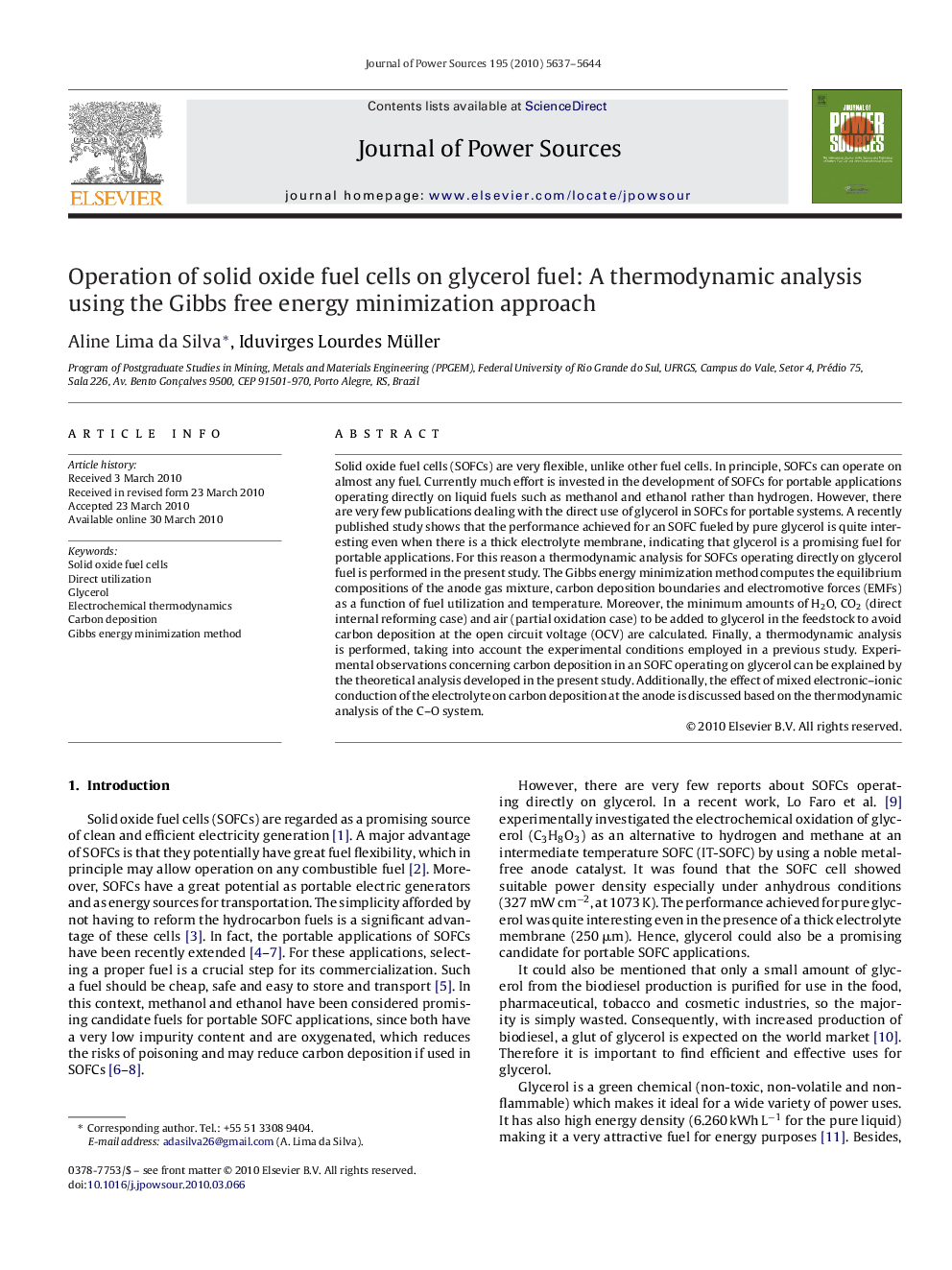| Article ID | Journal | Published Year | Pages | File Type |
|---|---|---|---|---|
| 1293729 | Journal of Power Sources | 2010 | 8 Pages |
Solid oxide fuel cells (SOFCs) are very flexible, unlike other fuel cells. In principle, SOFCs can operate on almost any fuel. Currently much effort is invested in the development of SOFCs for portable applications operating directly on liquid fuels such as methanol and ethanol rather than hydrogen. However, there are very few publications dealing with the direct use of glycerol in SOFCs for portable systems. A recently published study shows that the performance achieved for an SOFC fueled by pure glycerol is quite interesting even when there is a thick electrolyte membrane, indicating that glycerol is a promising fuel for portable applications. For this reason a thermodynamic analysis for SOFCs operating directly on glycerol fuel is performed in the present study. The Gibbs energy minimization method computes the equilibrium compositions of the anode gas mixture, carbon deposition boundaries and electromotive forces (EMFs) as a function of fuel utilization and temperature. Moreover, the minimum amounts of H2O, CO2 (direct internal reforming case) and air (partial oxidation case) to be added to glycerol in the feedstock to avoid carbon deposition at the open circuit voltage (OCV) are calculated. Finally, a thermodynamic analysis is performed, taking into account the experimental conditions employed in a previous study. Experimental observations concerning carbon deposition in an SOFC operating on glycerol can be explained by the theoretical analysis developed in the present study. Additionally, the effect of mixed electronic–ionic conduction of the electrolyte on carbon deposition at the anode is discussed based on the thermodynamic analysis of the C–O system.
